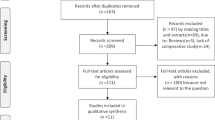Abstract
Background and Aims
Although ampullary cancer is a relatively uncommon malignancy, it is frequently associated with biliary obstruction. Endoscopic biliary drainage is regarded as a palliative treatment of choice for patients with inoperable ampullary cancer. However, there are no data concerning choice of stent in this patient population. The objective of this study was to compare the efficacy of metallic and plastic stents for biliary obstruction in patients with ampullary cancer.
Methods
Thirty-seven patients (15 men and 22 women; median age 74.7 years) with ampullary cancer treated with endoscopic biliary drainage were enrolled. Metallic and two plastic stents were placed in 17 and 20 patients, respectively. Clinical success, stent patency, and stent malfunction were evaluated.
Results
Clinical success was achieved in all patients (100%). The median period of stent patency was 132.7 days in the metallic stent group and 128.5 days in the plastic stent group (P > 0.05). Stent malfunctions developed in 17 and 19 patients in the metallic and plastic stent groups, respectively. Stent occlusion occurred in 15 (88.2%) and 15 (75%) patients and stent migration occurred in two (11.8%) and four (20%) patients in the metallic and plastic stent groups, respectively.
Conclusions
Endoscopic biliary drainage using metallic or plastic stents is effective for initial endoscopic palliation in patients with obstructive jaundice because of ampullary cancer. Although metallic and plastic stents had similar clinical effect, it seems reasonable to choose two plastic stents as the first option in patients with ampullary cancer considering the cost-effectiveness.
Similar content being viewed by others
References
Conlon KC. Carcinoma of the ampulla of vater: a distinct disease entity? Ann Surg Oncol. 2003;10:1136–1137.
Talamini MA, Moesinger RC, Pitt HA, et al. Adenocarcinoma of the ampulla of Vater. A 28-year experience. Ann Surg. 1997;225:590–599. Discussion 599–600.
Albores-Saavedra J, Schwartz AM, Batich K, Henson DE. Cancers of the ampulla of vater: demographics, morphology, and survival based on 5, 625 cases from the SEER program. J Surg Oncol. 2009;100:598–605.
Qiao QL, Zhao YG, Ye ML, et al. Carcinoma of the ampulla of Vater: factors influencing long-term survival of 127 patients with resection. World J Surg. 2007;31:137–143. Discussion 144–146.
Sivak MV. Clinical and endoscopic aspects of tumors of the ampulla of Vater. Endoscopy. 1988;20:211–217.
Morris-Stiff G, Alabraba E, Tan YM, et al. Assessment of survival advantage in ampullary carcinoma in relation to tumour biology and morphology. Eur J Surg Oncol. 2009;35:746–750.
Woo SM, Ryu JK, Lee SH, et al. Recurrence and prognostic factors of ampullary carcinoma after radical resection: comparison with distal extrahepatic cholangiocarcinoma. Ann Surg Oncol. 2007;14:3195–3201.
Sarmiento JM, Nagomey DM, Sarr MG, Farnell MB. Periampullary cancers: are there differences? Surg Clin North Am. 2001;81:543–555.
Heinrich S, Clavien PA. Ampullary cancer. Curr Opin Gastroenterol. 2010;26:280–285.
McLean GK, Burke DR. Role of endoprostheses in the management of malignant biliary obstruction. Radiology. 1989;170:961–967.
Adler DG, Baron TH, Davila RE, et al. ASGE guideline: the role of ERCP in diseases of the biliary tract and the pancreas. Gastrointest Endosc. 2005;62:1–8.
Speer AG, Cotton PB, Russell RC, et al. Randomised trial of endoscopic versus percutaneous stent insertion in malignant obstructive jaundice. Lancet. 1987;2:57–62.
Prat F, Chapat O, Ducot B, et al. A randomized trial of endoscopic drainage methods for inoperable malignant strictures of the common bile duct. Gastrointest Endosc. 1998;47:1–7.
Hammarstrom LE. Role of palliative endoscopic drainage in patients with malignant biliary obstruction. Dig Surg. 2005;22:295–304. discussion 305.
Cotton PB. Duodenoscopic placement of biliary prostheses to relieve malignant obstructive jaundice. Br J Surg. 1982;69:501–503.
Huibregtse K, Haverkamp HJ, Tytgat GN. Transpapillary positioning of a large 3.2 mm biliary endoprosthesis. Endoscopy. 1981;13:217–219.
Zimmon DS, Chang J, Clemett AR. Advances in the management of bile duct obstruction: percutaneous transhepatic cholangiography and endoscopic retrograde cholangiopancreatography. Med Clin North Am. 1979;63:593–609.
Cairns SR, Dias L, Cotton PB, Salmon PR, Russell RC. Additional endoscopic procedures instead of urgent surgery for retained common bile duct stones. Gut. 1989;30:535–540.
Weber A, Mittermeyer T, Wagenpfeil S, Schmid RM, Prinz C. Self-expanding metal stents versus polyethylene stents for palliative treatment in patients with advanced pancreatic cancer. Pancreas. 2009;38:e7–e12.
Lammer J, Hausegger KA, Fluckiger F, et al. Common bile duct obstruction due to malignancy: treatment with plastic versus metal stents. Radiology. 1996;201:167–172.
Kullman E, Frozanpor F, Soderlund C, et al. Covered versus uncovered self-expandable nitinol stents in the palliative treatment of malignant distal biliary obstruction: results from a randomized, multicenter study. Gastrointest Endosc. 2010;72:924–926.
Johanson JF, Schmalz MJ, Geenen JE. Incidence and risk factors for biliary and pancreatic stent migration. Gastrointest Endosc. 1992;38:341–346.
Guidelines for the management of patients with pancreatic cancer periampullary and ampullary carcinomas. Gut. 2005;54:v1–v16.
Acknowledgments
This study was supported by a grant from the Korea Healthcare technology R&D Project, Ministry for Health, Welfare and Family Affairs, Republic of Korea (A091047).
Conflicts of interest
S. B. Park, H. W. Kim, D. H. Kang, C. W. Choi, J. H. Ryu, C. W. Chu, S. Y. Lee, Y. I. Jeong, H. J. Yeo, and E. J. Kim have no conflicts of interest or financial ties to disclose.
Author information
Authors and Affiliations
Corresponding author
Additional information
Su Bum Park and Hyung Wook Kim contributed equally to this work.
Rights and permissions
About this article
Cite this article
Park, S.B., Kim, H.W., Kang, D.H. et al. Metallic or Plastic Stent for Bile Duct Obstruction in Ampullary Cancer?. Dig Dis Sci 57, 786–790 (2012). https://doi.org/10.1007/s10620-011-1909-2
Received:
Accepted:
Published:
Issue Date:
DOI: https://doi.org/10.1007/s10620-011-1909-2




